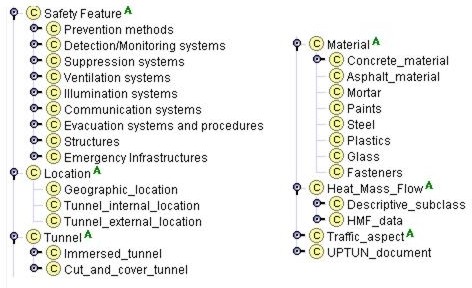
engineering & technology publications
ISSN 1759-3433
PROCEEDINGS OF THE EIGHTH INTERNATIONAL CONFERENCE ON THE APPLICATION OF ARTIFICIAL INTELLIGENCE TO CIVIL, STRUCTURAL AND ENVIRONMENTAL ENGINEERING
Tunnels in an Ontological Perspective
+Department of Informatics, University of Verona, Italy
*Department of Construction and Transportation, University of Padova, Italy
The reasons for supporting this process in such a semi-automatic way are many:
- The aspects that have to be considered when applying an upgrade procedure are so many that in practice it is impossible to manage them without an automated support;
- The number of experts involved is high, and they usually do not speak the same technical language, and often do not speak the same natural language as well, therefore we need to support a a unified model of knowledge, that will necessarily be a web-based one, due to the geographic spread of the experts;
- It is not possible to share data of different experts without the direct support of unified processing service. Many of the processing utilities presently employed or under development have proprietary input and output data formats, forcing therefore the experts to transfer data to each other either through complex semi-automated translation processes or by means of human understanding, often supported by printed data sheets.
In this paper we illustrate the conceptual organisation of data describing tunnels. This describes a tunnel as an object in a model of knowledge developed in OWL, deployed by means of an Ontology Editor. Protege-2000 is used, which is an open source system. The top-level of this ontological model is shown in Figure 2.1.
The aspects included in this description are fundamentally five: the functional and prescriptive requirements of tunnels, the tunnel safety features, the tunnel structure and geometry, the data description of mass-heat flow analysis, and the notion of documents to be deployed in the IntelliTun application.
For all the above mentioned aspects, the ontological perspective upon tunnels we have undertaken, is essentially based on the needs of the application, and in the sense which is proposed in the current literature about formal ontology is a task-oriented ontology. This justifies some technicalities of the structure which are not required in a more general and less application-oriented specification.
purchase the full-text of this paper (price £20)
go to the previous paper
go to the next paper
return to the table of contents
return to the book description
purchase this book (price £80 +P&P)
